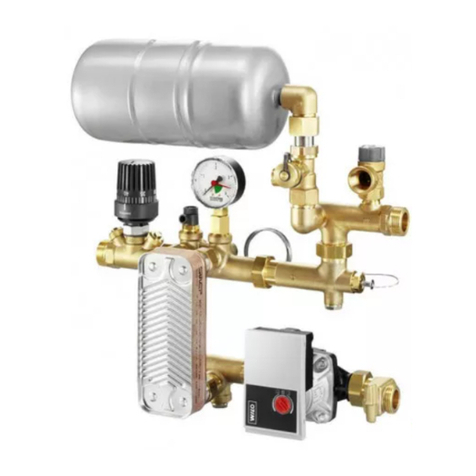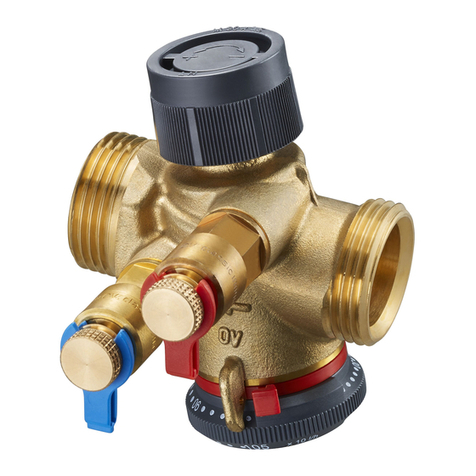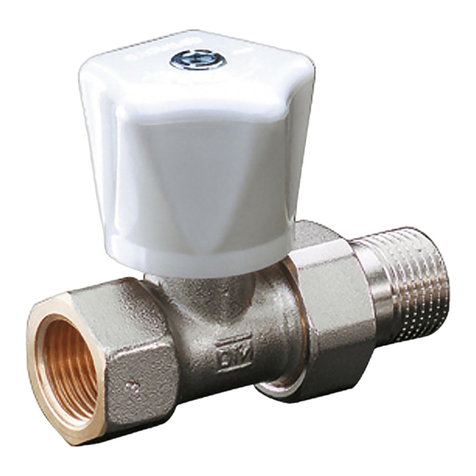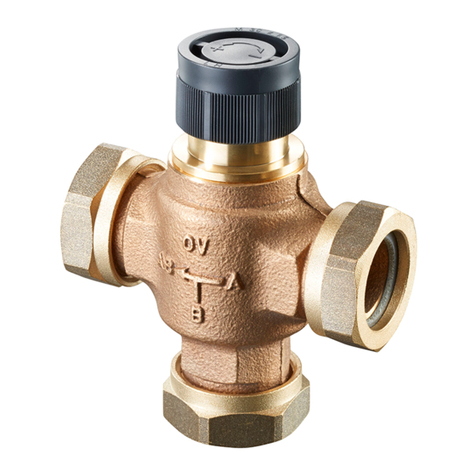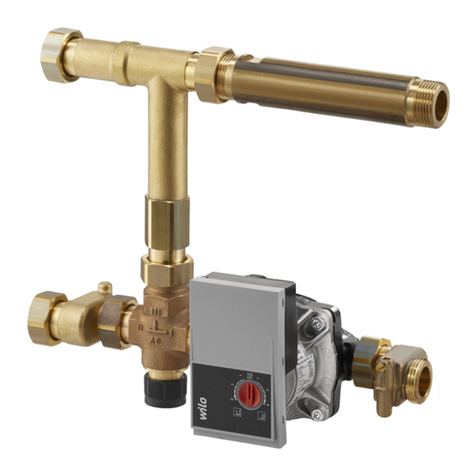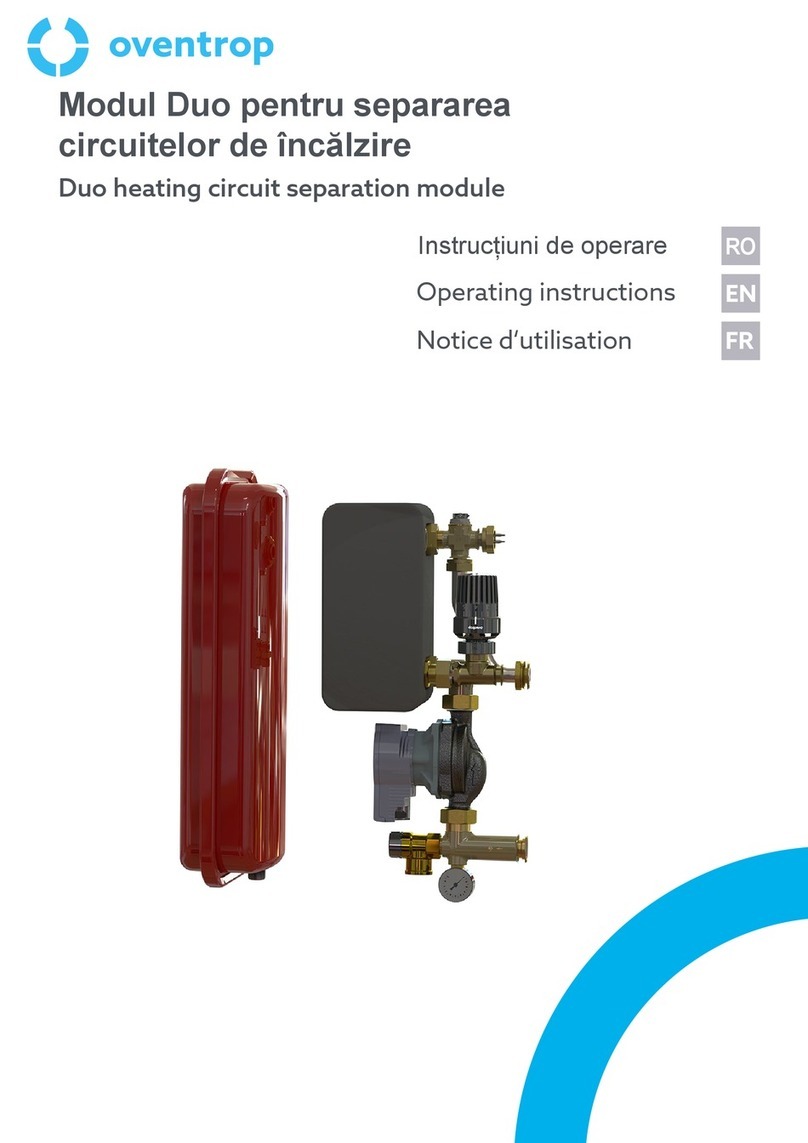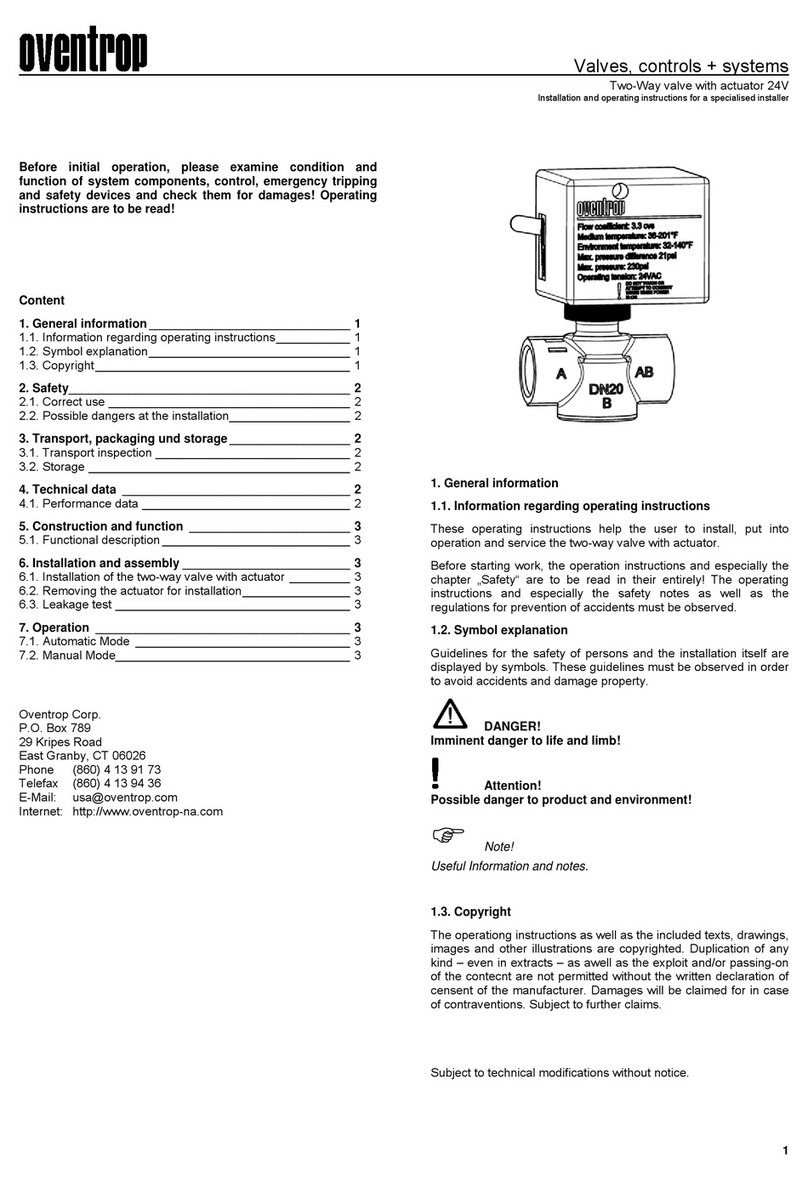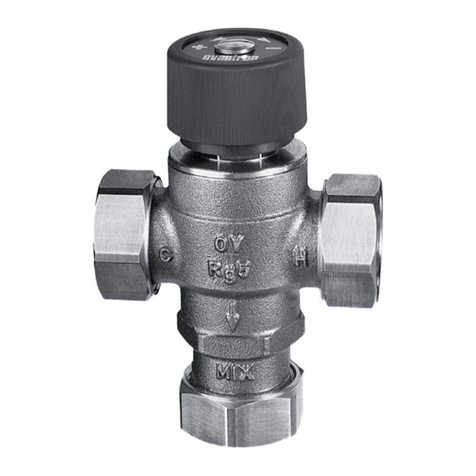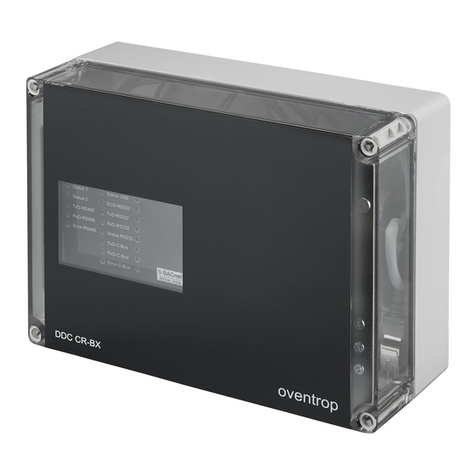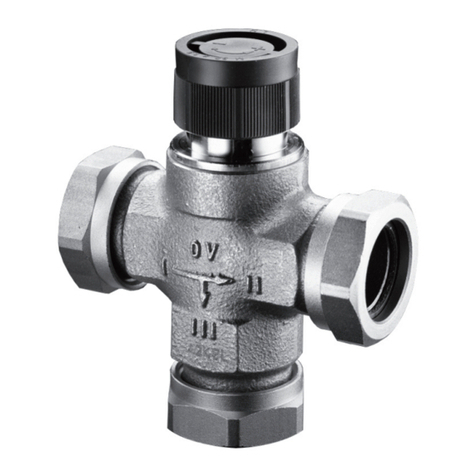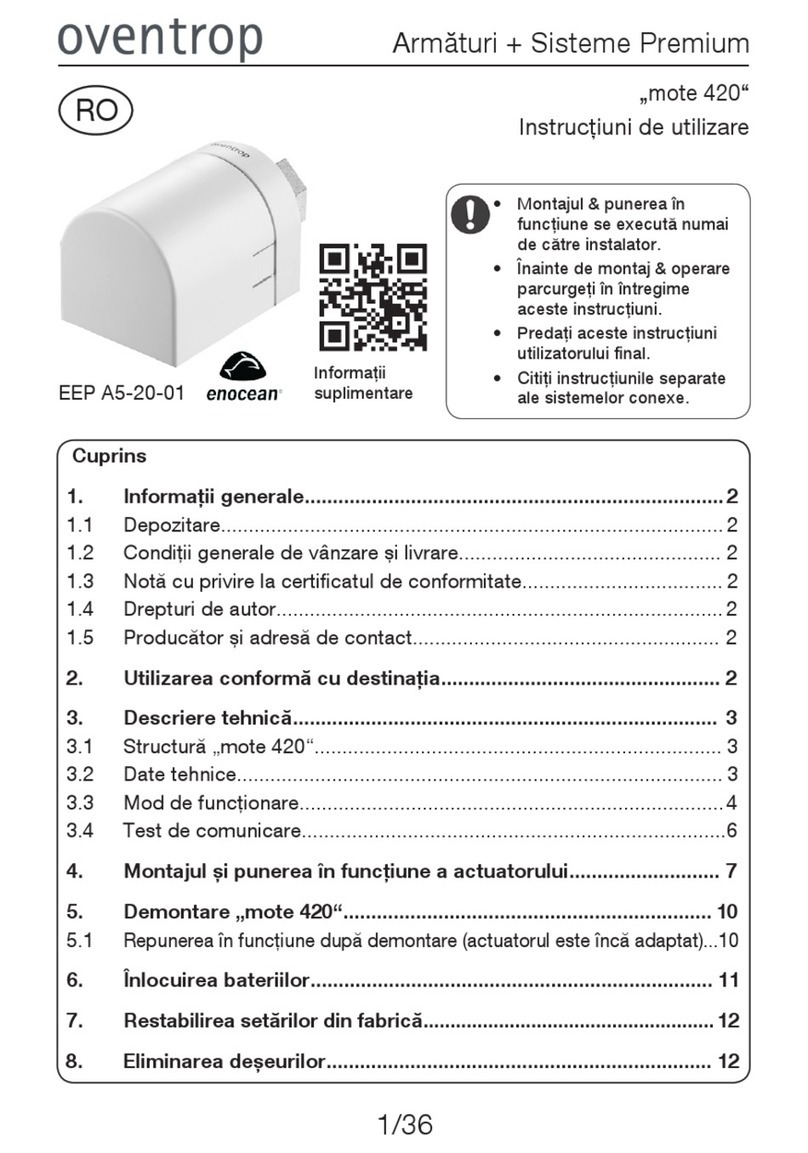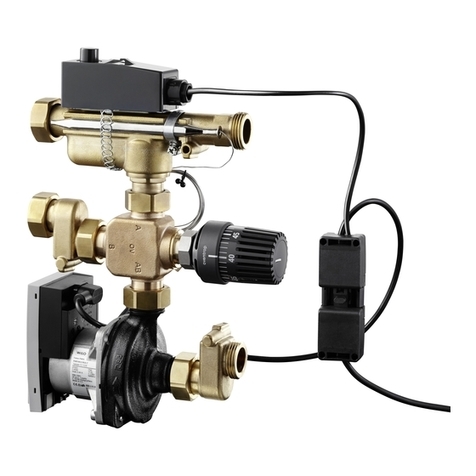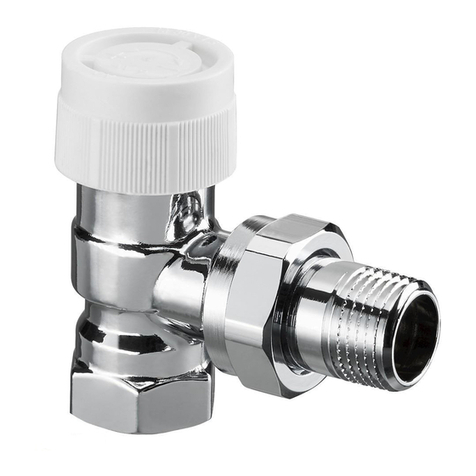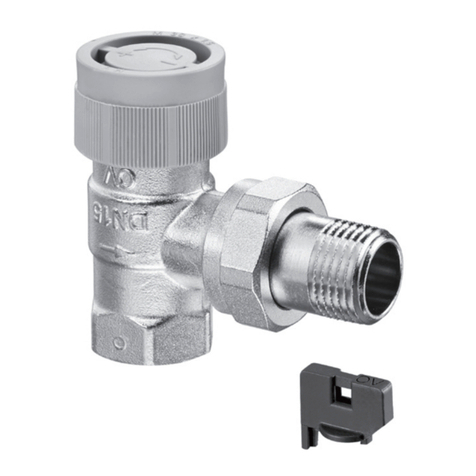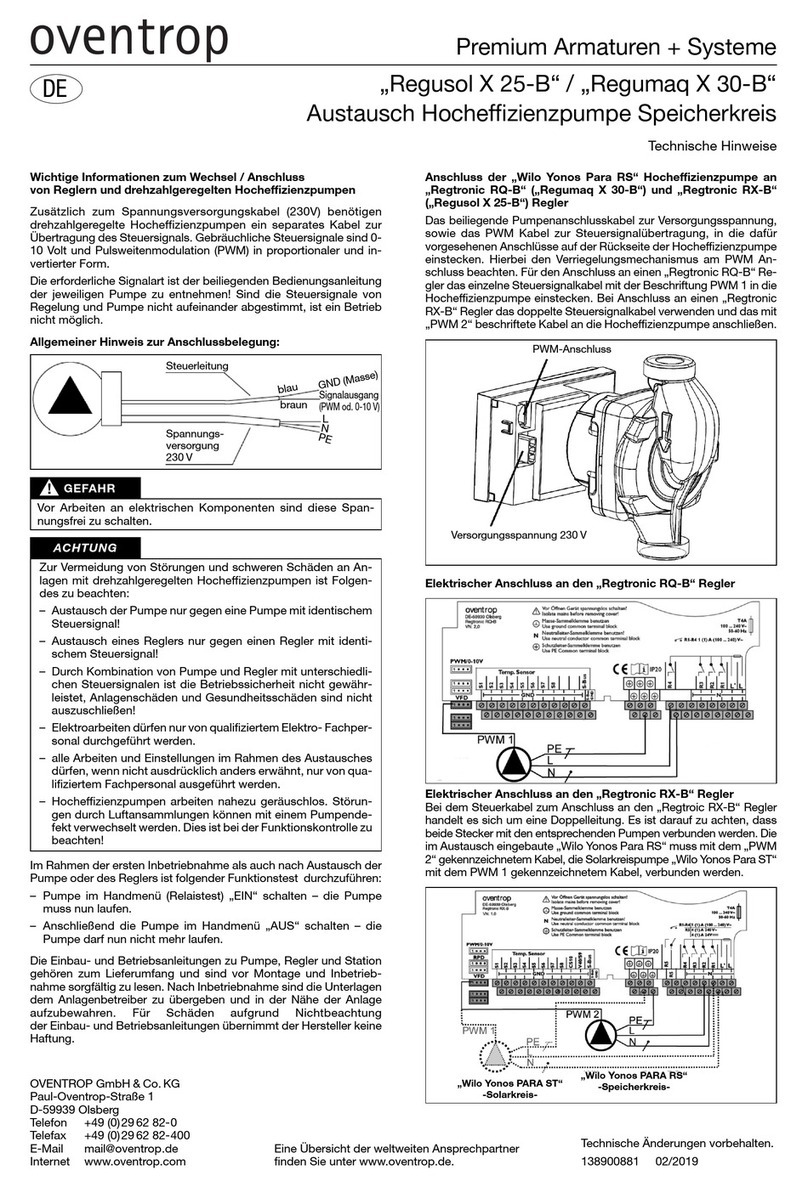
- 4 -
8 Commissioning
After delivery the room operating unit might be in default
shipping mode, in this case press the learn button (<1 sec-
ond) at the rear of the device.
The sensor is supplied in an operational status. Probably, the
internal solar energy storage must be recharged after a longer
storage of the radio sensors in darkness. Basically, the recharg-
ing process is done automatically during the first operating hours
in daylight.
To ensure correct evaluation of the sensor's readings on the
receiver, it is necessary to program the units into the receiver
(radio-based room module). This can only be performed via the
respective “DynaTemp” operating program and occurs automat-
ically with the “Learn button” on the sensor or manually in the
so-called “Offline mode” by entering the 32 bit sensor ID (bar-
code). Details are described in the respective operating manual.
The unit must only be installed in dry rooms that are not subject
to explosion hazards.
9 Information about radio
9.1 Coverage planning
As the radio signals are electromagnetic waves, the signal on its
way from sender to receiver is attenuated. This means that the
electrical as well as magnetic field strength decreases, namely
inversely proportional to the square of the distance of sender
and receiver (E,H~1/r²). Apart from this natural coverage limita-
tion, there are additional interference factors: Metallic parts, e.g.
armouring in walls, metal foil of heat insulation or metallised
heat protection glass all reflect electromagnetic waves. This
results in a so-called radio shadow being formed behind. Radio
waves might be able to get through walls, but this increases the
attenuation even more than during propagation in open air.
9.2 Permeation of radio signals:
Wood, plaster, uncoated glass 90...100%
Brickwork, pressboard 65...95%
Armoured concrete 10...90%
Metal, aluminium lamination 0...10%
In practice, this means that the building materials used in build-
ings play an important role when assessing the radio range.
Some reference values so that the surrounding area can be
assessed: Transmission path range/permeation:
9.3 Visual contacts:
Typ. 30m range in corridors
Up to 100m in halls
Plasterboard walls/wood: Typ. 30m range through
max. 5 walls
Brick wall/aerated concrete: Typ. 20m range through
max. 3 walls
Armoured concrete walls/ceilings: Typ. 10m range
through max. 1 ceiling
Supply blocks and elevator shafts should be regarded as seal-
ing-off. Furthermore, the angle at which the sent signal hits the
wall plays a role. Depending on the angle, the effective wall
strength and thus attenuation of the signal changes. If possible,
the signals should run vertically through the masonry. Niches in
walls are to be avoided. Devices that also operate with high-
frequency signals, e.g. computers, audio/video systems, elec-
tronic transformers and ballasts count as additional disturbance
sources. The minimum distance to these devices should be
0.5m.
9.4 Sending frequency
The sensors send radio telegrams to the receiver event- or time-
controlled.
9.5 Measuring principle and telegram generation
9.5.1 A: “event-controlled”
By pressing the learn button of the unit, the internal micropro-
cessor is activated, the measured value for temperature is
determined and a telegram to the receiver is generated.
9.5.2 B: “time-controlled”
The internal microprocessor is activated at a time interval of
approx. 1.6 minutes (T-wake up), and the measured value for
the temperature is determined. If the status of an input has
changed since the last request (temperature change > 2% (>
0.8°C), a telegram is generated instantly. If the temperature
remains unchanged compared to the previous telegram, a tele-
gram is generated automatically once the fixed transmission
time expires after approx. 16 minutes (T_send). Once a tele-
gram is sent, whether it is generated through a change of state
or expiry of T_send, the timers for T_wake up and T_intervall
are restarted.
Note: A telegram always includes all information (temperature
value etc....)
9.6 Factory settings
T_wake up: 100, T_intervall: 10
T_send = 100 sec. wake up x 10 interval = 1000 Seconds =
approx. 16 minutes
Notes:
The sending frequency also has a direct impact on the operating
energy available in the energy store and thus on the discharge
time of the energy store during operation.
If the ambient lighting is too low, it might be necessary to oper-
ate the unit with a lithium battery 3.6 V/1.1 Ah, type: LS14250 /
1/2 AA.
Teach-in telegram
when button is pressed

